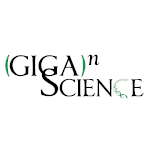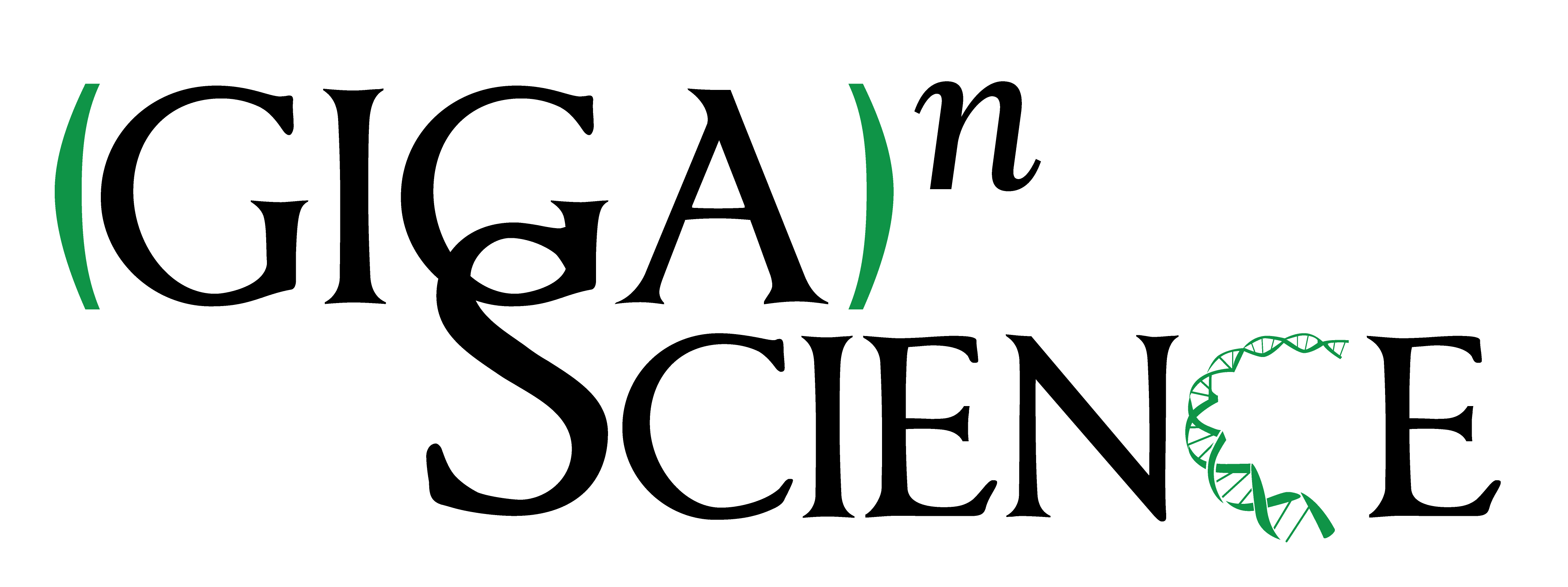Genomic evidence for hybridization and introgression between blue peafowl and green peafowl and selection for white plumage
This article has been Reviewed by the following groups
Listed in
- Evaluated articles (GigaScience)
Abstract
The blue peafowl ( Pavo cristatus ) and the green peafowl ( Pavo muticus ) have significant public affection due to their stunning appearance, although the green peafowl is currently endangered. Some studies have suggested introgression between these the two species, although evidence is mixed. In this study, we successfully assembled a high-quality chromosome-level reference genome of the blue peafowl, including the autosomes, Z and W sex chromosomes as well as a complete mitochondria DNA sequence. Data from 77 peafowl whole genomes, 76 peafowl mitochondrial genomes and 33 peahen W chromosomes genomes provide the first substantial genetic evidence for recent hybridization between green and blue peafowl. We found three hybrid green peafowls in zoo samples rather than in the wild samples, with blue peafowl genomic content of 16-34%. Maternal genetic analysis showed that two of the hybrid female green peafowls contained complete blue peafowl mitochondrial genomes and W chromosomes. Hybridization of endangered species with its relatives is extremely detrimental to conservation. Some animal protection agencies release captive green peafowls in order to maintain the wild population of green peafowls. Therefore, in order to better protect the endangered green peafowl, we suggest that purebred identification must be carried out before releasing green peafowls from zoos into the wild in order to preventing the hybrid green peafowl from contaminating the wild green peafowl. In addition, we also found that there were historical introgression events of green peafowl to blue peafowl in four Zoo blue peafowl individuals. The introgressed genomic regions contain IGFBP1 and IGFBP2 genes that could affect blue peafowl body size. Finally, we identified that the nonsense mutation (g.4:12583552G>A) in the EDNRB2 gene is the genetic causative mutation for white feather color of blue peafowl (also called white peafowl), which prevents melanocytes from being transported into feathers, such that melanin cannot be deposited.
Article activity feed
-

AbstractThe blue peafowl (Pavo cristatus) and the green peafowl (Pavo muticus) have significant public affection due to their stunning appearance, although the green peafowl is currently endangered. Some studies have suggested introgression between these the two species, although evidence is mixed. In this study, we successfully assembled a high-quality chromosome-level reference genome of the blue peafowl, including the autosomes, Z and W sex chromosomes as well as a complete mitochondria DNA sequence. Data from 77 peafowl whole genomes, 76 peafowl mitochondrial genomes and 33 peahen W chromosomes genomes provide the first substantial genetic evidence for recent hybridization between green and blue peafowl. We found three hybrid green peafowls in zoo samples rather than in the wild samples, with blue peafowl genomic content of 16-34%. …
AbstractThe blue peafowl (Pavo cristatus) and the green peafowl (Pavo muticus) have significant public affection due to their stunning appearance, although the green peafowl is currently endangered. Some studies have suggested introgression between these the two species, although evidence is mixed. In this study, we successfully assembled a high-quality chromosome-level reference genome of the blue peafowl, including the autosomes, Z and W sex chromosomes as well as a complete mitochondria DNA sequence. Data from 77 peafowl whole genomes, 76 peafowl mitochondrial genomes and 33 peahen W chromosomes genomes provide the first substantial genetic evidence for recent hybridization between green and blue peafowl. We found three hybrid green peafowls in zoo samples rather than in the wild samples, with blue peafowl genomic content of 16-34%. Maternal genetic analysis showed that two of the hybrid female green peafowls contained complete blue peafowl mitochondrial genomes and W chromosomes. Hybridization of endangered species with its relatives is extremely detrimental to conservation. Some animal protection agencies release captive green peafowls in order to maintain the wild population of green peafowls. Therefore, in order to better protect the endangered green peafowl, we suggest that purebred identification must be carried out before releasing green peafowls from zoos into the wild in order to preventing the hybrid green peafowl from contaminating the wild green peafowl. In addition, we also found that there were historical introgression events of green peafowl to blue peafowl in four Zoo blue peafowl individuals. The introgressed genomic regions contain IGFBP1 and IGFBP2 genes that could affect blue peafowl body size. Finally, we identified that the nonsense mutation (g.4:12583552G>A) in the EDNRB2 gene is the genetic causative mutation for white feather color of blue peafowl (also called white peafowl), which prevents melanocytes from being transported into feathers, such that melanin cannot be deposited.
This work has been peer reviewed in GigaScience (https://doi.org/10.1093/gigascience/giae124), which carries out open, named peer-review. These reviews are published under a CC-BY 4.0 license and were as follows:
Reviewer #2: Subhradip Karmakar
I read with interest the manuscript " Genomic evidence for hybridization and introgression between blue peafowl and endangered green peafowl and molecular Foundation of peafowl white plumage" by Lujiang et al. . This is a well-drafted, well-executed study that investigated the effect of introgression in shaping the genomic diversity landscape of peafowl. I am glad the authors undertook this much-needed study which is so critical from an evolutionary point of view. I have few queries and clarifications needed :
- Fig S21 : Manhattan Plot : What is the loci on Chr 4 & Chr 6 that showed above threshold? What are the consequences of IL12b and IL25 ?
- Page 50, Line : 929 : " The genes (IGF2BP3, TGBR1, ISPD, MEOX2, GLI3 and MC4R) related to body size in blue peafowl were also found to have introgression areas from green peafowl" What is the evidence for this ? Were these genes absent before the introgression events in blue peafowl? What are the modifications of IGFBP after introgression? Is it under positive selection? If yes why
- There is not much discussion on Fig S 22 ( Suppl) on the KEGG Pathway hits. What is the significance of ribosome biogenesis? Protein processing in ER, etc
- The white peafowls were homozygous for the mutant (A/A), resulting in the loss of EDNRB2 transcript. What is the reason for this mutant gene's fixation in white plumage birds?
- The images, almost all of them, appear very hazy and blurry. It may be an issue with my computer. Please recheck
- Please elaborate on the significance of IL6 and other immune-related genes in the discussion.
-

AbstractThe blue peafowl (Pavo cristatus) and the green peafowl (Pavo muticus) have significant public affection due to their stunning appearance, although the green peafowl is currently endangered. Some studies have suggested introgression between these the two species, although evidence is mixed. In this study, we successfully assembled a high-quality chromosome-level reference genome of the blue peafowl, including the autosomes, Z and W sex chromosomes as well as a complete mitochondria DNA sequence. Data from 77 peafowl whole genomes, 76 peafowl mitochondrial genomes and 33 peahen W chromosomes genomes provide the first substantial genetic evidence for recent hybridization between green and blue peafowl. We found three hybrid green peafowls in zoo samples rather than in the wild samples, with blue peafowl genomic content of 16-34%. …
AbstractThe blue peafowl (Pavo cristatus) and the green peafowl (Pavo muticus) have significant public affection due to their stunning appearance, although the green peafowl is currently endangered. Some studies have suggested introgression between these the two species, although evidence is mixed. In this study, we successfully assembled a high-quality chromosome-level reference genome of the blue peafowl, including the autosomes, Z and W sex chromosomes as well as a complete mitochondria DNA sequence. Data from 77 peafowl whole genomes, 76 peafowl mitochondrial genomes and 33 peahen W chromosomes genomes provide the first substantial genetic evidence for recent hybridization between green and blue peafowl. We found three hybrid green peafowls in zoo samples rather than in the wild samples, with blue peafowl genomic content of 16-34%. Maternal genetic analysis showed that two of the hybrid female green peafowls contained complete blue peafowl mitochondrial genomes and W chromosomes. Hybridization of endangered species with its relatives is extremely detrimental to conservation. Some animal protection agencies release captive green peafowls in order to maintain the wild population of green peafowls. Therefore, in order to better protect the endangered green peafowl, we suggest that purebred identification must be carried out before releasing green peafowls from zoos into the wild in order to preventing the hybrid green peafowl from contaminating the wild green peafowl. In addition, we also found that there were historical introgression events of green peafowl to blue peafowl in four Zoo blue peafowl individuals. The introgressed genomic regions contain IGFBP1 and IGFBP2 genes that could affect blue peafowl body size. Finally, we identified that the nonsense mutation (g.4:12583552G>A) in the EDNRB2 gene is the genetic causative mutation for white feather color of blue peafowl (also called white peafowl), which prevents melanocytes from being transported into feathers, such that melanin cannot be deposited.
This work has been peer reviewed in GigaScience (https://doi.org/10.1093/gigascience/giae124), which carries out open, named peer-review. These reviews are published under a CC-BY 4.0 license and were as follows:
Reviewer #1: Huirong Mao
The authors had finished very systematic and comprehensive research. They obtained a high-quality chromosome-level reference genome of the blue peafowl, including the autosomes, Z and W sex chromosomes as well as a complete mitochondria DNA sequence by combined several sequencing technologies(HiFi sequencing and Hi-C sequencing). Based on this, they further confirmed the evidence of introgression between blue peafowl and green peafowl. In addition, it is finding the nonsense mutation (g.4:12583552G>A) in the EDNRB2 gene as the causative mutation for white feather color of blue peafowl that identifies an important gap on the genetic mechanism of the white plumage in the peafowl. Overall, The results and resources obtained from this study are valuable further comparative genomic studies in birds. The analyses are also sound and comprehensive. However, before considering acceptance, there are some questions and clarifications needed from the authors to fully substantiate the findings and their implications. i) The "Results" section of the paper contains extensive analysis and discussion, which overlaps significantly with the "Discussion" section. It is recommended to consolidate and streamline these sections. ii) The authors used 'white feather' peafowl throughout the manuscript. Actually there are scientific terms about these color abnormality, for instance, leucism or albino plumage. Please define whether your samples from leucitic or albino populations. Also please change the term 'white feather' throughout the manuscript. iii) The authors used three types of data (one-to-one orthologs datasets, four-fold degenerate sites datasets and mitochondrial sequence datasets) to study the genetic relationships between peacocks, chickens, and turkeys, and proved that the genetic distance between peacocks and chickens is closer (See Line 859-862). However, from the results section, in Figure 1C, the pattern of tree3 shows that the genetic distance between peacocks and turkeys appears to be closer, suggesting a certain contradiction between the results and the discussion sections. iv) Why were individuals with the "pied" phenotype not selected as controls for the corresponding transcriptomic study to validate the molecular mechanisms of feather formation in blue peacocks using RNA-Seq results? v) The statement in the sentence "Compared with the peafowl, the ROH length of all peafowl populations is short and the total is small (see Line 624-625)" seems to be incorrect. vi) The entire paper still needs further improvement in terms of writing norms and grammar. (eg. Line 642, "as an outgroup", Line 647 "The mitochondrial phylogenetic" etc )
-

